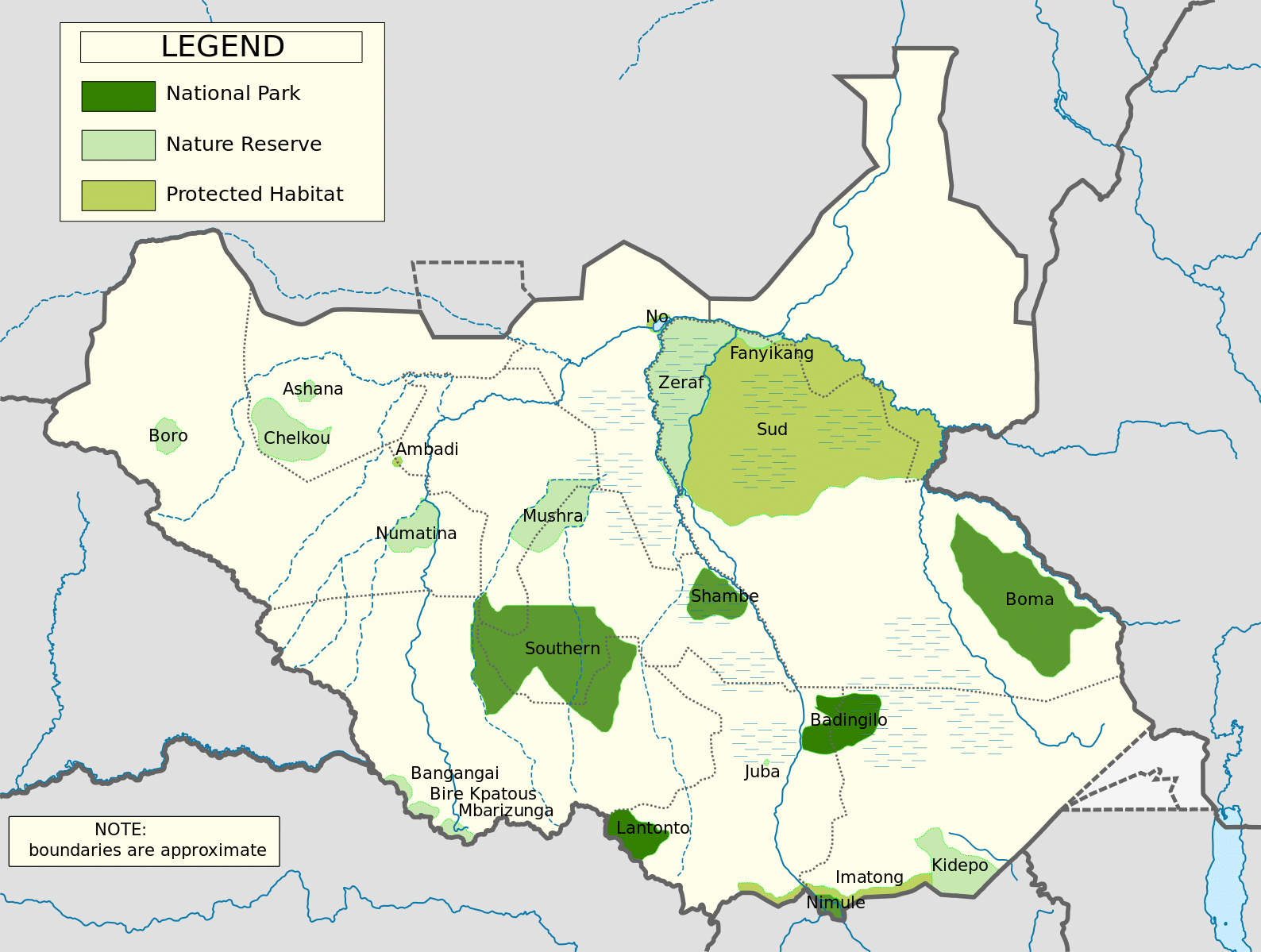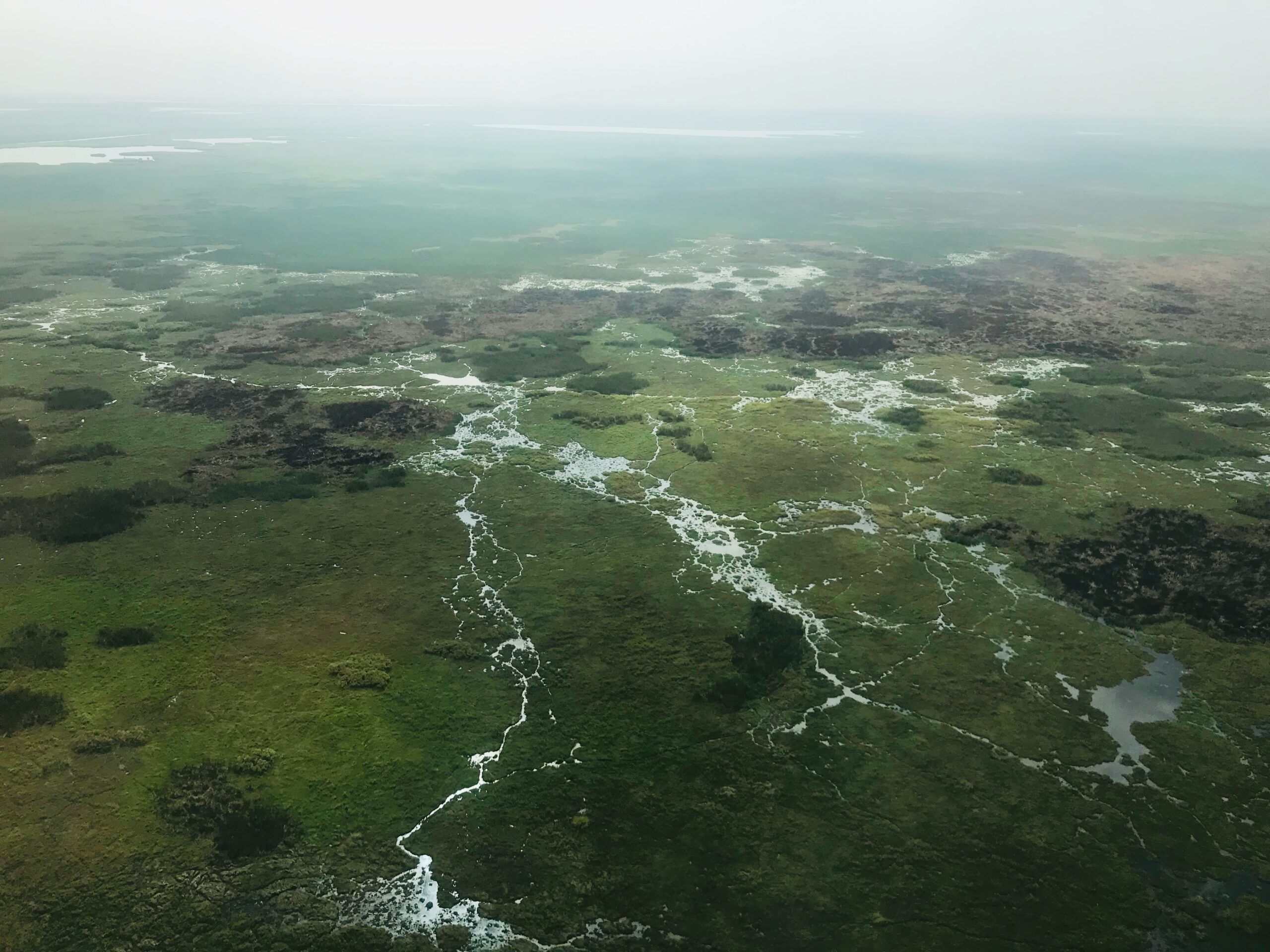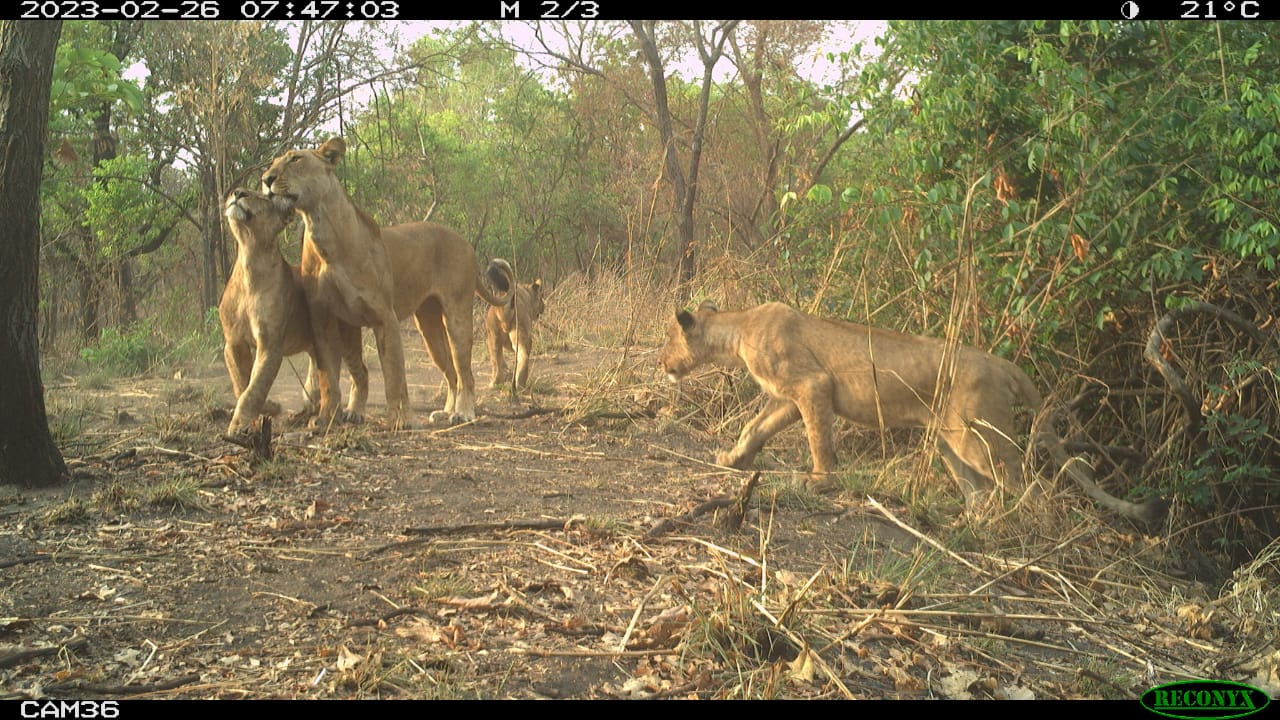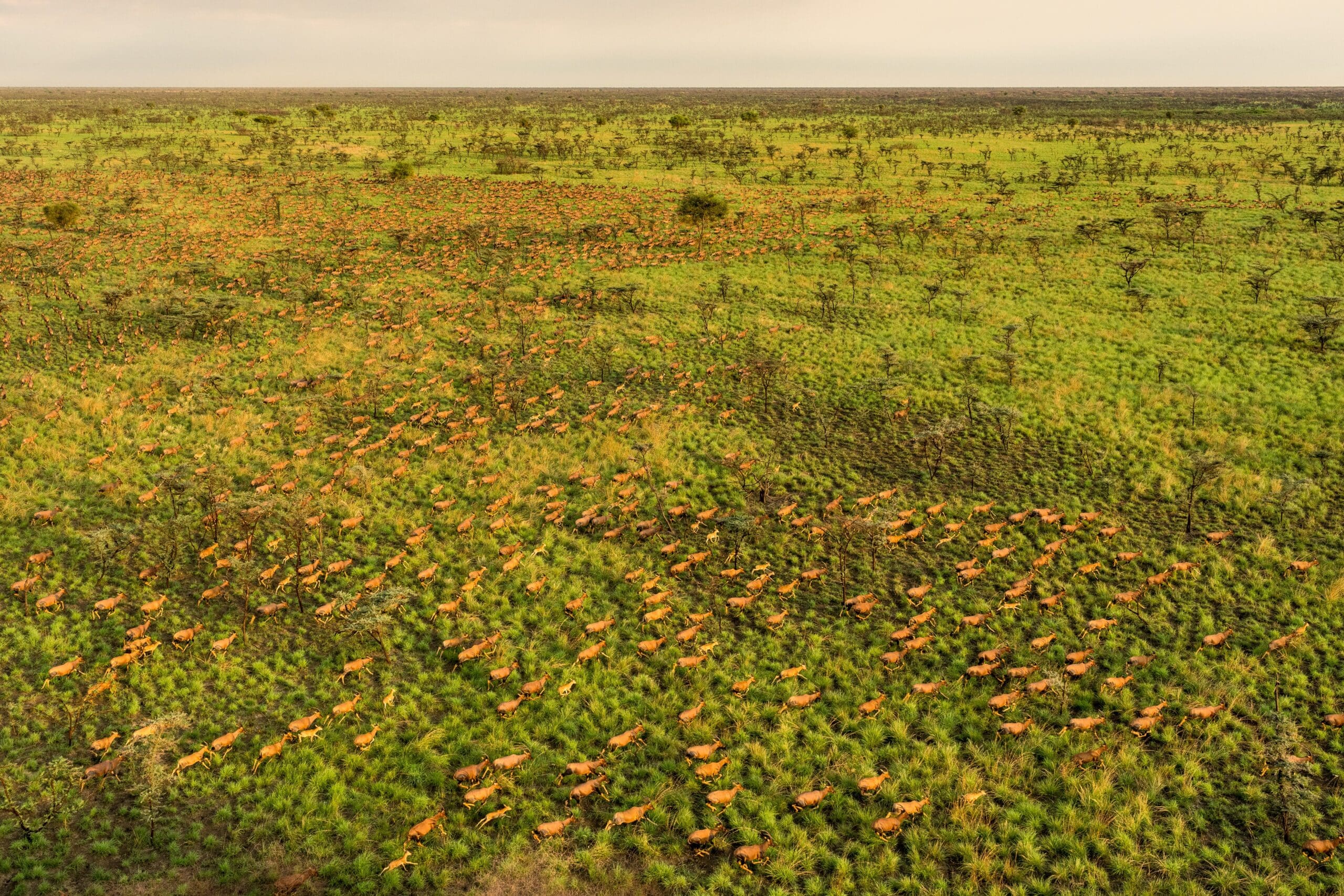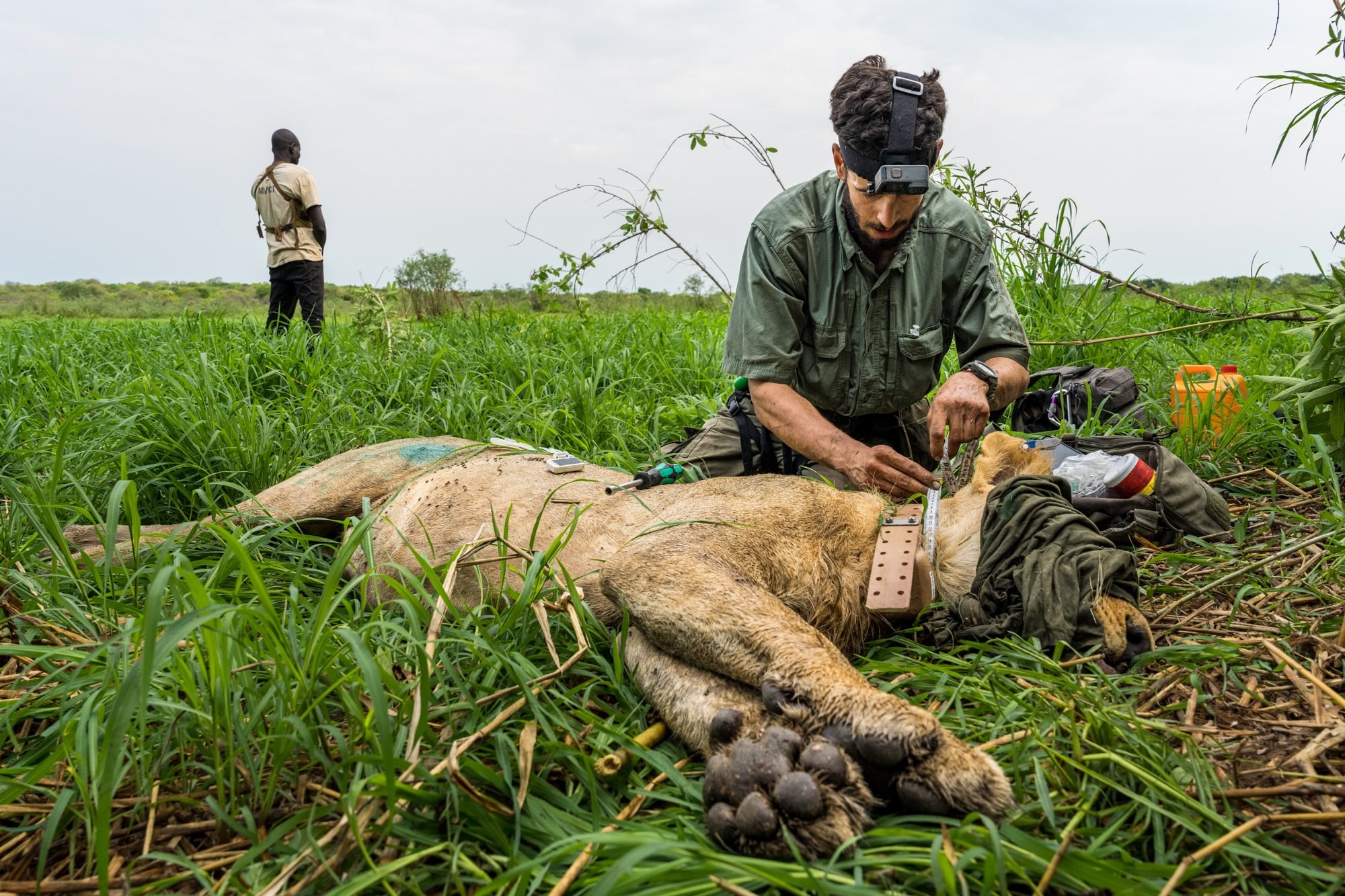From a lion conservation perspective, South Sudan is the last frontier. Less is known about lions in South Sudan than in any other range state. The country is emerging from decades of civil war, and little is known about what of the country’s natural resources made it through those torrid times. South Sudan is a vast country with some incredible protected areas and natural features, and even if a small fraction of the country’s pre-war lion populations persisted, it would be hugely significant.
As peace has returned to South Sudan, there has been growing interest from conservation NGOs in working in the country. For example, Fauna & Flora are working in the western part of Southern National Park and African Parks were recently mandated to manage Boma National Park, Badingilo National Park, and the proposed extension zones of the two national parks and wildlife corridors for the wildlife migrations. In addition, another NGO, the Enjojo Foundation, is working to secure a mandate to support the management of Lantoto National Park and Kidepo Game Reserve. In the Sudd—a vast swamp in the centre of the country—a small local NGO called Agency for Conservation and Development has undertaken some exploratory work and confirmed the presence of lions, giraffes, and elephants, but also noted significant poaching.
The LRF has been supporting Fauna & Flora’s work in Southern National Park for four years now. Southern NP is a vast protected area with minimal roads and park infrastructure. Fauna & Flora was given the mandate to support the management of the western part of Southern NP, and the LRF has supported them with two grants towards this end. We strongly suspected that lions still occurred in the park, and neighbouring communities and the rangers working there were totally convinced that they persisted, but we had no photographic proof. Fauna & Flora searched diligently, using camera traps to gather evidence of lions.
Month after month passed with no positive confirmation. The camera traps found evidence of a significant population of African wild dogs, chimpanzees, roan antelope, and various other species, but no lions. Last April, I was on a field trip to the eastern Central African Republic with the Landscape Manager for Southern NP, Benoit Morkel, to discuss plans for the conservation of lions in the region. Benoit’s failure to find proof of the presence of lions was increasingly the basis for some relentless teasing. More seriously, the apparent absence of lions did begin to call into question the wisdom of continuing to invest there. “They MUST be there”, we opined with emphasis, wistfully shaking our heads. “But if they are there, why haven’t they shown up on the camera traps after all this time?”
Just an hour later, Benoit approached the mess tent, clutching his phone with a massive grin on his face. He had just been sent a camera trap photo from Southern National Park, proving the presence of lions! The first camera-trap image was of a single male lion with a warthog kill, but more recently, Fauna & Flora’s team captured photos of a whole pride, proving that the lions are breeding there. This is really exciting news. There is no doubt that wildlife in Southern NP is very depleted and that it will take a massive investment in protection and community engagement to allow for a recovery, but the potential is there.
Across the Nile, in eastern South Sudan, African Parks took occupancy of the Boma-Badingilo Landscape that they have been mandated to manage. Their first task was to establish a presence to get a handle on the situation and understand the status, distribution, and threats of the remaining wildlife. The LRF provided African Parks with a grant to help them achieve these objectives.
While it is early days, there are three key points that are emerging from the landscape. Firstly, and quite incredibly, there remain enormous migrations of multiple species. Hundreds and hundreds of thousands of white-eared kob continue to migrate across wide swathes of eastern South Sudan. In addition, tens of thousands of tiang, mongalla gazelle, and bohor reedbuck also remain. They seem to have avoided catastrophic population declines through their mobility. Figuring out how to conserve these animals, which pass far outside the boundaries of the protected areas, will be an enormous challenge.
Secondly, the sedentary wildlife species appear to have been significantly depleted over decades of poaching. While giraffes, eland, and a few other species are in fair densities, buffalo numbers are severely reduced; bushmeat poaching has clearly exacted an enormous toll.
Thirdly, and perhaps most surprisingly, there seem to be significant numbers of lions remaining in Boma and Badingilo. The wildlife service and African Parks staff hear them roaring frequently and have repeatedly sighted them from the air. It is possible that a population of hundreds of lions remain, which is an enormous boost. There are also cheetahs still in these parks, which is very exciting, and we hope to soon hear of the first sighting of African wild dogs. African Parks has managed to collar three lions, which will help shed light on their movement patterns. A key question is how they survive given the scarcity of sedentary prey.
Outside of the three parks discussed in this blog, almost nothing is known about the distribution and status of lions in South Sudan. It really is the last frontier from a lion conservation perspective. We know lions are found far and wide east of the Nile River, and may be restricted to pockets inside or close to protected areas west of the Nile.
A huge amount of work is ahead to protect the natural heritage of the country, which could be difficult given the ongoing political instability and severe developmental challenges being faced by the country. There is a narrowing window of opportunity to protect the wildlife that remains in South Sudan and we are grateful to the authorities and to the NGOs working there for their efforts. South Sudan is an incredibly special country from a nature perspective, and we are very happy to be able to support efforts to conserve lions and other species there.


